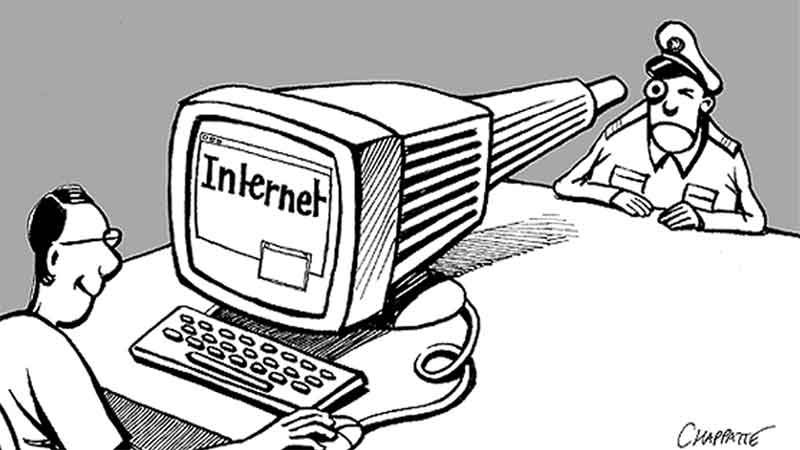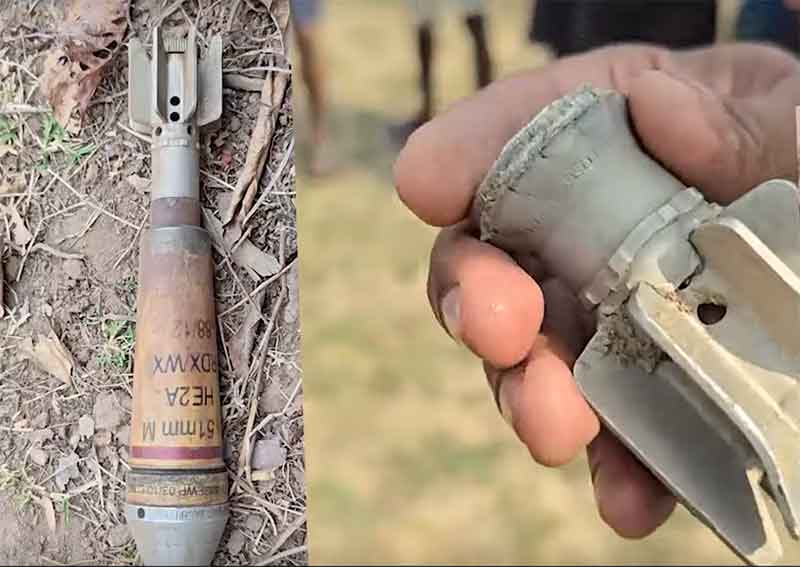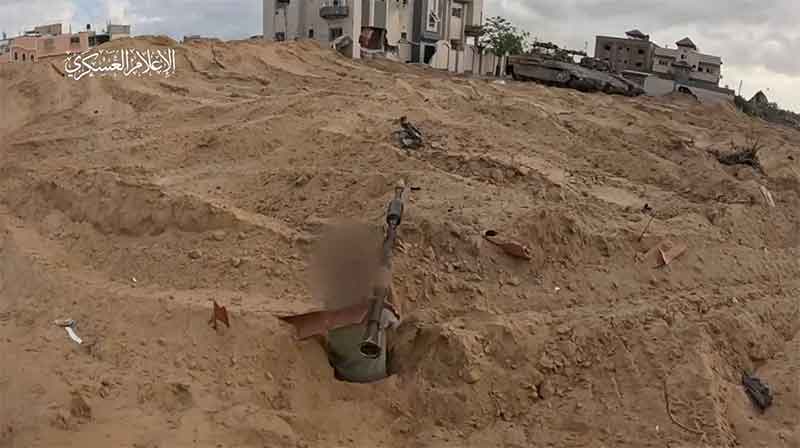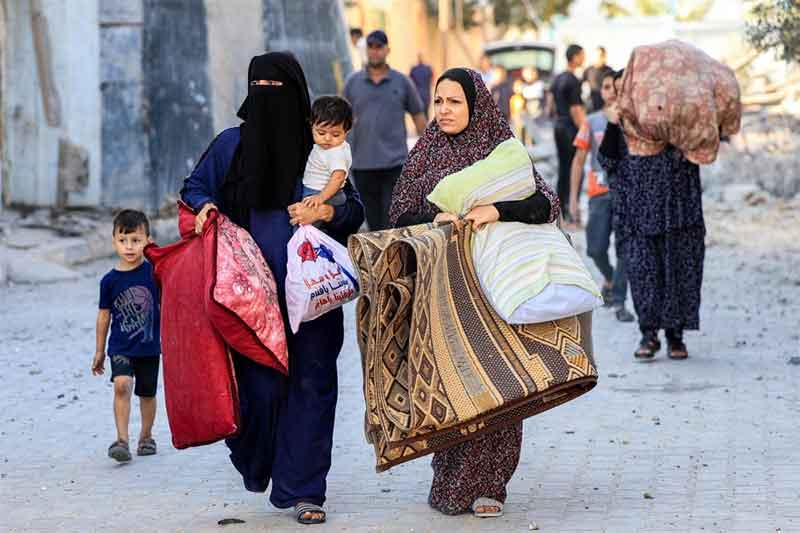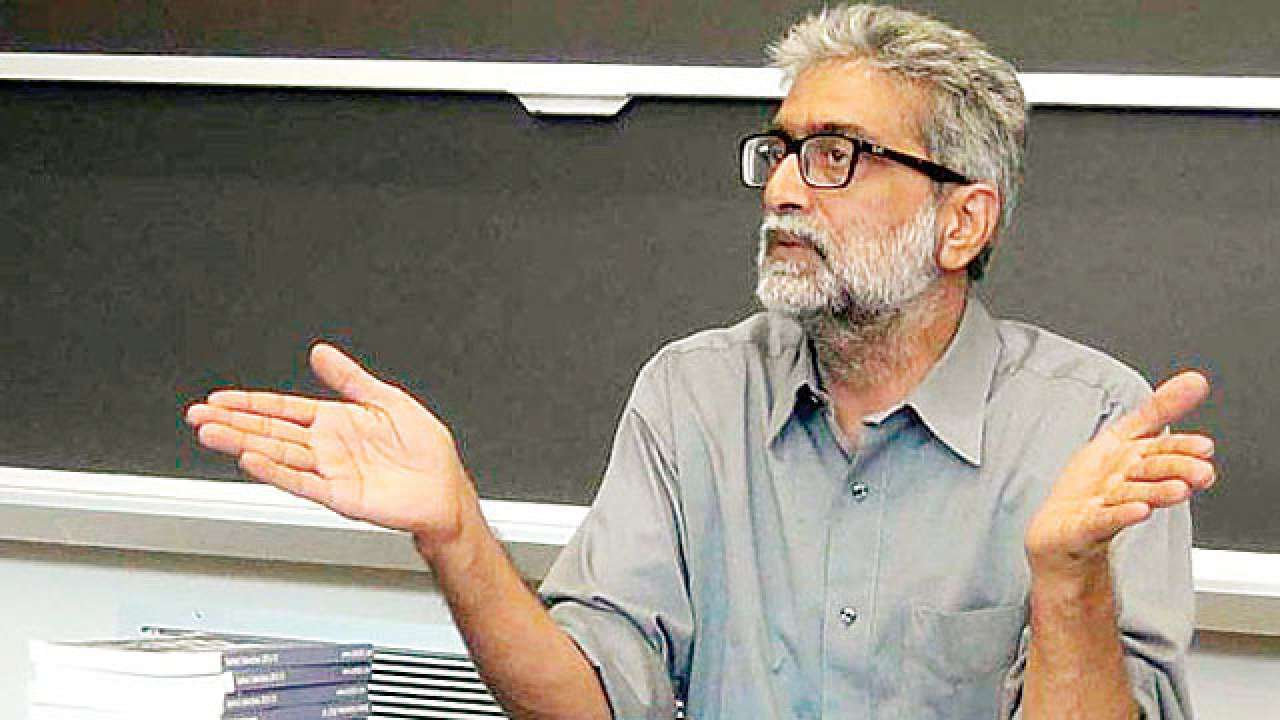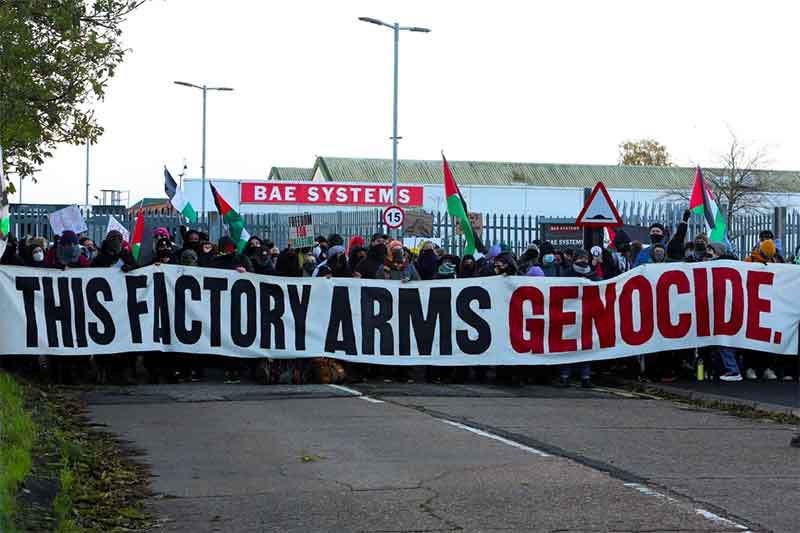
A Ukrainian soldier who lost his leg in battle told The Washington Post that he would not volunteer to fight for his country again — expressing a rare but growing pessimism around the war.
Ruslan Proektor, 52, told the U.S. newspaper in a report published Thursday that he lost his leg this summer after stepping on a Russian mine. The soldier who rescued Proektor also stepped on a mine, causing additional injuries, he said.
Proektor, now recovering in Kyiv, said that if he were given the choice to join the military now, he would not sign up.
“They are taking everyone and sending them to the front line without proper preparation,” he told the Washington Post. “I don’t want to be in the company of unmotivated people.”
It is unclear which brigade Proektor fought in or whether he had military experience before the full-scale Russian invasion in 2022.
Narrative of Perseverance Has Begun To Fray
The Washington Post report (Slow counteroffensive darkens mood in Ukraine, August 10, 2023) said:
This nation (Ukraine) is worn out.
Ukrainian officials and their western partners hyped up a coming counteroffensive — one that, buoyed by a flood of new weapons and training, they hoped would turn the tide of the war.
But two months after Ukraine went on the attack, with little visible progress on the front and a relentless, bloody summer across the country, the narrative of unity and endless perseverance has begun to fray.
The number of dead — untold thousands — increases daily. Millions are displaced and see no chance of returning home. In every corner of the country, civilians are exhausted from a spate of recent Russian attacks — including strikes on a historic cathedral in Odessa, a residential building in Kryvyi Rih and a blood transfusion center in the Kharkiv region.
No Good News
The report said:
Ukrainians, much in need of good news, are simply not getting any.
Music teacher Svitlana Zhdanova, 75, was sitting in her living room in Pokrovsk on Tuesday evening when the missiles rammed into her block, shattering all her glassware and breaking her piano. Not knowing where else to go, she cleaned up the apartment she has lived in since 1969 and decided to stay.
Raisa Rybalchenko, 78, lived on the fourth floor of a building badly damaged in the double strike.
Rybalchenko was among the crowds of shocked people helping board up windows and sort through the remnants of their lives. She hopes the government will repair her apartment. “But right now, I don’t know,” she said. “I don’t have any idea what is next. I’m just in shock.”
In Smila, a small city in central Ukraine, baker Alla Blyzniuk, 42, said she sells sweets for funeral receptions daily as parents prepare to bury their children killed on the front hundreds of miles away.
Before, she said, even when the situation was painful, “people were united.” They volunteered, made meals for one another and delivered food to soldiers. Now, she said, there is a sense of collective “disappointment.”
Blyzniuk also lives in fear that her husband or two sons of fighting age will be mobilized. She has already noticed that far fewer men walk the streets of her city than before. Ukraine does not disclose its military casualty counts, but everyone shares stories, she said, of new soldiers at the front lasting just two to three days.
“The defenders of our country should be professionals,” she said. “I’m really sad,” she added. “We Ukrainians did not deserve this destiny.”
In the Donetsk region, an Estonian Ukrainian soldier who goes by the call sign Suzie works at a stabilization point where wounded soldiers are treated before being transferred to hospitals in safer towns. On a recent day, he helped organize body bags that would soon be used in the makeshift morgue that already reeked of death.
Sometimes, he said, soldiers’ bodies are so blown apart they have to use two or three body bags to contain them. There are times when a soldier is returned with “just 15 percent of the body,” Suzie said. “I never saw so much blood before.”
“It is such a hard price for freedom,” he added.
Painful Signs Of War Lurk Everywhere
The report added:
These scenes are unfolding a world away from Kyiv, the capital, where civilians — somewhat protected by strengthened air defenses — often hardly even react to air raid sirens. But even here, painful signs of the war lurk everywhere.
On park benches, freshly wounded soldiers being treated in the capital sip coffee and smoke cigarettes before returning to their hospital beds. They watch as civilians stroll by, dogs and babies in tow.
Viktor, 34, a former restaurant waiter, is among them. He came under mortar attack in a trench on the front line in Zaporizhzhia last week. His wrist was split open and his face — now covered in scabs — was sprayed with shrapnel. His knee was also hit.
Now, in Kyiv, he sees bars and restaurants are packed and the city hums with traffic. A group of children walked by, craning their necks to look at his injuries. Viktor, who asked that his last name not be disclosed for security reasons, considered himself lucky to at least be able to walk.
Many other men in the same park are missing limbs, and Viktor’s Facebook is flooded with photos of soldiers who did not make it home at all. The images haunt him so much he no longer likes to check his phone.
“It is too depressing,” he said.
Just 400 Meters In 7 Hours
The latest fight has been grueling. One day, it took his unit seven hours to move forward just 400 meters, he said — about a quarter of a mile. “And that was quite fast.”
He and his wife, who is also serving in the military, were due to see each other that afternoon for the first time since he was wounded. “I will probably cry,” he said. Once he is healed, he said, he will go back to the front.
Ruslan Proektor, 52, lost his leg this summer when he stepped on a mine fighting in the east. He was immediately wounded again when the soldier trying to carry him to safety stepped on another. Now that he is recovering in Kyiv, his wife, Anna Oliinyk, 47, said she wants “the counteroffensive to be more active.”
“We have got all these guys coming back from the front line without limbs,” she said, looking at her husband, who was in a wheelchair. “I want the price they paid to be reasonable. Otherwise it is just useless, what they went through.”
Given the choice now, Proektor said, he would not sign up again. “They are taking everyone and sending them to the front line without proper preparation,” he said. “I don’t want to be in the company of unmotivated people.”
Others like him are mainly enraged at Russia — but they also are not afraid to criticize Ukraine.
Profiting Off The War
The Washington Post report said:
Last week, President Volodymyr Zelensky acknowledged that a government audit of recruitment centers discovered “revolting” practices among corrupt officials.
One soldier who goes by the call sign “Positive” and is recovering at a hospital in Kyiv after suffering concussions in Kherson and Bakhmut, said people profiting off the war “should be sent to the front line.”
Yulia Paltseva, 36, a receptionist in Kyiv, said she has been shocked by how residents of Kyiv still party and socialize. Her boyfriend is at the front and will soon be transferred to fight near Bakhmut, she said.
“All those dancing and smiling people should remember that there are those soldiers like my boyfriend in the trenches without any rotations and being shelled every day,” Paltseva said.
As for the counteroffensive, she said: “Our expectations were higher. If it is going on, it is going slow.”
In Kryvyi Rih, doctor Valeriya Maslyanyk, 58, sighed as she looked up at her damaged apartment this week — just one entrance over from a section of the building destroyed in a strike last month. A gaping hole sits where her neighbors used to live. Outside, a pile of flowers and stuffed animals memorializes them.
Already thinking ahead to winter, she fears her windows will not be replaced by the time temperatures start to drop. She is tired and sees no end in sight. “I want to go to the sea,” she said wistfully. “But the Russians took all of our seas.”
Across the street, construction worker Volodymyr Pravednyk, 46, stopped to observe the wreckage. His sister lives in the same apartment block but escaped unscathed.
Pravednyk said that he fears that the attack was “just the beginning” of more strikes on this industrial city. He lives around the corner, and each time he passes the ruined building, he said, “I feel sorrow for us Ukrainian civilians who have to suffer so much.”
Heavier Losses
Many of the units being sent into battle are drawn from brigades that have been hastily trained and equipped in NATO countries over the past few months. These troops are suffering heavier losses compared with more-experienced but worse-equipped units, The Guardian reported.
Michael Kofman, a well-known military analyst, told The Guardian that the lack of training probably was pivotal.
“I think it is very fair to have been skeptical that, with so little training, you could create cohesive units that can perform in combat for the first time against such well-prepared defenses,” he said.
Wishful Thinking
The report by The Guardian (Ukrainian counteroffensive’s slow going offers reality check but could yet pay off, 2 Aug 2023) said:
The first casualty of the Ukrainian counteroffensive was wishful thinking. Any hope that Russian troops would abandon their trenches and flee has now been left far behind on the battlefield.
The occupying forces held firm and have mostly kept their discipline in the first seven weeks, absorbing one attack after another, often counterattacking to recover lost ground, and mounting offensives of their own in Luhansk and other spots on the frontline where they sensed weakness.
Initial Ukrainian assaults got mired in dense, overlapping minefields. For all the focus on the delivery of Leopards and other western tanks in the run-up to the launch of the offensive on 4 June, Ukrainian armor failed to provide the clenched fist needed to breach the lines.
The report said:
The Ukrainians had mine-clearing vehicles but not enough. They were priority targets for the Russians, who learned to stack anti-tank mines on top of each other to hobble them.
“You just can’t overstate the role that these Russian minefields are playing,” Matt Dimmick, a retired U.S. colonel and former national security council director for Russia, said. “The stories that we are hearing from the frontlines is Ukrainian units come up against these defenses where mines in some places are every metre or every two metres … and it requires the Ukrainians to stop, dismount and push soldiers forward to clear those minefields and create lanes.”
The Ukrainians adapted their tactics, switching to platoon-sized infantry units, often at night, to pick their way through the minefields. But that has meant that progress has been slow, at walking speed, with frequent halts and withdrawals. Pathways cleared through minefields have been quickly reseeded remotely by Russian drones or artillery.
The hot and rainy weather this summer has made the ground boggy and pushed up lush undergrowth in which the Russians can conceal themselves.
It said:
The Ukrainians are still battling through the Russians’ forward defenses. They have not even reached the major fortified lines that lie ahead of them.
Last Saturday, after seven gruelling weeks, the Ukrainian commander, Valerii Zaluzhnyi, deployed troops from his 10th Corps on the Orikhiv front. It had been held back as a second-echelon force, to take up the offensive when the first wave, mostly from the 9th Corps, reached the Russians’ main defensive line. Instead, the 10th had to be sent in to try to finish the work of the 9th.
The units now being sent into battle are mostly drawn from brigades that have been hastily trained and equipped in NATO countries over the past few months. Such units had deployed piecemeal before but this represented a major infusion.
So far, and it is very early to make definitive judgments, their arrival has not transformed the battlefield. U.S. officials initially briefed journalists that the 10th Corps’ deployment signaled the start of the “main thrust” of the counteroffensive, but back-pedaled days later.
One emerging trend of the counteroffensive is that the newly created western-armed Ukrainian brigades have not performed as well as more experienced but less well-equipped units, like the 3rd Assault Brigade, which have been part of the most successful Ukrainian advance so far, into the town of Klishchiivka, south of Bakhmut.
Arguably the most optimistic case of wishful thinking was the expectation that Ukrainian troops trained for a few months in NATO states and armed with NATO equipment, would instantly be able to fight the NATO way. They were being asked to advance without two of the prerequisites a NATO commander would take for granted: complete air superiority and overwhelming artillery firepower, all tightly coordinated together.
The newly minted Ukrainian officers have generally been able to reproduce what they have learned at company level, but not at the much larger scale necessary to quickly overwhelm Russian fixed positions.
“I think it is very fair to have been skeptical that, with so little training, you could create cohesive units that can perform in combat for the first time against such well-prepared defenses,” said Michael Kofman, a senior fellow in the Russia and Eurasia programme at the Carnegie Endowment for International Peace.
While there is no question that the counteroffensive has not lived up to general expectations in western capitals and is way behind the more optimistic schedules, most military experts argue it is far too early to declare it a failure.
They note that some major offensives in history now seen as brilliant successes, had to persevere through a phase of near deadlock.
The report said:
While Ukrainian forces had to claw back Russian-held territory 100 meters at a time, and their advances look almost negligible on a map of the whole front, territory is not the only measure of success. The impact of attrition on Russians forces may not be immediately apparent but it could be equally significant in the longer term.
It said:
Ukrainian commander-in-chief Zaluzhny and his top officers knew they did not have the tools they really needed when they launched the counteroffensive but felt time pressure, as the Russians deepened their trenches, and signs of impatience and donor fatigue appeared in the west.
Changing Tactics
Some Western-trained brigades have even started to abandon U.S.-taught tactics because they have proved ineffective, The New York Times reported earlier this month.
Instead of attacking Russian positions head-on using complicated Western-military maneuvers, many Ukrainian service members have resorted to artillery and missile barrages, the New York Times said.
The report (Ukrainian Troops Trained by the West Stumble in Battle, Aug. 2, 2023) said:
The first several weeks of Ukraine’s long-awaited counteroffensive have not been kind to the Ukrainian troops who were trained and armed by the United States and its allies.
Equipped with advanced American weapons and heralded as the vanguard of a major assault, the troops became bogged down in dense Russian minefields under constant fire from artillery and helicopter gunships. Units got lost. One unit delayed a nighttime attack until dawn, losing its advantage. Another fared so badly that commanders yanked it off the battlefield altogether.
Now the Western-trained Ukrainian brigades are trying to turn things around, U.S. officials and independent analysts say. Ukrainian military commanders have changed tactics, focusing on wearing down the Russian forces with artillery and long-range missiles instead of plunging into minefields under fire. A troop surge is underway in the country’s south, with a second wave of Western-trained forces launching mostly small-scale attacks to punch through Russian lines.
But early results have been mixed. While Ukrainian troops have retaken a few villages, they have yet to make the kinds of sweeping gains that characterized their successes in the strategically important cities of Kherson and Kharkiv last fall. The complicated training in Western maneuvers has given the Ukrainians scant solace in the face of barrage after barrage of Russian artillery.
NATO’S Hope Failed To Materialize
The report said:
Ukraine’s decision to change tactics is a clear signal that NATO’s hopes for large advances made by Ukrainian formations armed with new weapons, new training and an injection of artillery ammunition have failed to materialize, at least for now.
It raises questions about the quality of the training the Ukrainians received from the West and about whether tens of billions of dollars’ worth of weapons, including nearly $44 billion worth from the Biden administration, have been successful in transforming the Ukrainian military into a NATO-standard fighting force.
“The counteroffensive itself has not failed; it will drag on for several months into the fall,” said Michael Kofman, a senior fellow at the Carnegie Endowment for International Peace who recently visited the front lines. “Arguably, the problem was in the assumption that with a few months of training, Ukrainian units could be converted into fighting more the way American forces might fight, leading the assault against a well-prepared Russian defense, rather than helping Ukrainians fight more the best way they know how.”
President Vladimir V. Putin of Russia has increasingly signaled that his strategy is to wait out Ukraine and its allies and win the war by exhausting them. American officials are worried that Ukraine’s return to its old tactics risks that it will race through precious ammunition supplies, which could play into Mr. Putin’s hands and disadvantage Ukraine in a war of attrition.
Biden administration officials had hoped the nine Western-trained brigades, some 36,000 troops, would show that the American way of warfare was superior to the Russian approach.
The Americans taught the Ukrainians to empower senior enlisted soldiers to make quick decisions on the battlefield and to deploy combined arms tactics — synchronized attacks by infantry, armor and artillery forces.
Western officials championed that approach as more efficient than the costly strategy of wearing Russian forces down by attrition, which threatens to deplete Ukraine’s ammunition stocks.
Much of the training involved teaching Ukrainian troops how to go on the offensive rather than stay on defense. For years, Ukrainian troops had worked on defensive tactics as Russian-backed separatists launched attacks in eastern Ukraine. When Moscow began its full-scale invasion last year, Ukrainian troops put their defensive operations into play, denying Russia the swift victory it had anticipated.
The effort to take back their own territory “is requiring them to fight in different ways,” Colin H. Kahl, who recently stepped down as the Pentagon’s top policy official, said last month.
But the Western-trained brigades received only four to six weeks of combined arms training, and units made several mistakes at the start of the counteroffensive in early June that set them back, according to U.S. officials and analysts who recently visited the front lines and spoke to Ukrainian troops and commanders.
Some units failed to follow cleared paths and ran into mines. When a unit delayed a nighttime attack, an accompanying artillery bombardment to cover its advance went ahead as scheduled, tipping off the Russians.
Ukraine’s Losses In 2 Weeks
The report by the New York Times said:
In the first two weeks of the counteroffensive, as much as 20 percent of the weaponry Ukraine sent to the battlefield was damaged or destroyed, according to U.S. and European officials. The toll included some of the formidable Western fighting machines — tanks and armored personnel carriers — that the Ukrainians were counting on to beat back the Russians.
“They were given a tall order,” said Rob Lee, a Russian military specialist at the Foreign Policy Research Institute in Philadelphia and a former U.S. Marine officer, who has also traveled to the front lines. “They had a short amount of time to train on new equipment and to develop unit cohesion, and then they were thrown into one of the most difficult combat situations. They were put in an incredibly tough position.”
President Volodymyr Zelensky of Ukraine acknowledged in late July that his country’s counteroffensive against dug-in Russian troops was advancing more slowly than expected.
“We did have plans to start it in the spring, but we did not because, frankly, we had not enough munitions and armaments and not enough properly trained brigades — I mean, properly trained in these weapons,” Mr. Zelensky said via video link at the Aspen Security Forum, an annual national-security conference.
He added that “because we started it a bit late,” Russia had “time to mine all of our lands and build several lines of defense.”
Ukraine may well return to the American way of warfare if it breaks through dug-in Russian defenses, some military experts said. But offense is harder than defense, as Russia demonstrated last year when it abandoned its initial plans to advance to Kyiv.
“I do not think they are abandoning combined arms tactics,” Philip M. Breedlove, a retired four-star Air Force general who was NATO’s supreme allied commander for Europe, said in an interview. “If they were to get through the first, second or third lines of defense, I think you are going to see the definition of combined arms.”
Speaking at the Aspen forum, Jake Sullivan, President Biden’s national security adviser, said, “Ukraine has a substantial amount of combat power that it has not yet committed to the fight, and it is trying to choose its moment to commit that combat power to the fight when it will have the maximum impact on the battlefield.”
That moment appeared to come last week when Ukraine significantly ratcheted up its counteroffensive with two southward thrusts apparently aimed at cities in the Zaporizhzhia region: Melitopol, near the Sea of Azov, and Berdiansk, to the east on the Azov coast. In both cases, the Ukrainians have advanced only a few miles and have dozens more to go.
But analysts question whether this second wave, relying on attacks by smaller units, will generate enough combat power and momentum to allow Ukrainian troops to push through Russian defenses.
Gian Luca Capovin and Alexander Stronell, analysts with the British security intelligence firm Janes, said that the small-unit attack strategy “is extremely likely to result in mass casualties, equipment loss and minimal territorial gains” for Ukraine.
General Breedlove said he still expected the Ukrainian counteroffensive to put Russia at a disadvantage.
“The Ukrainians are in a place now where they understand how they want to employ their forces,” he said. “And we are starting to see the Russians move backwards.”





